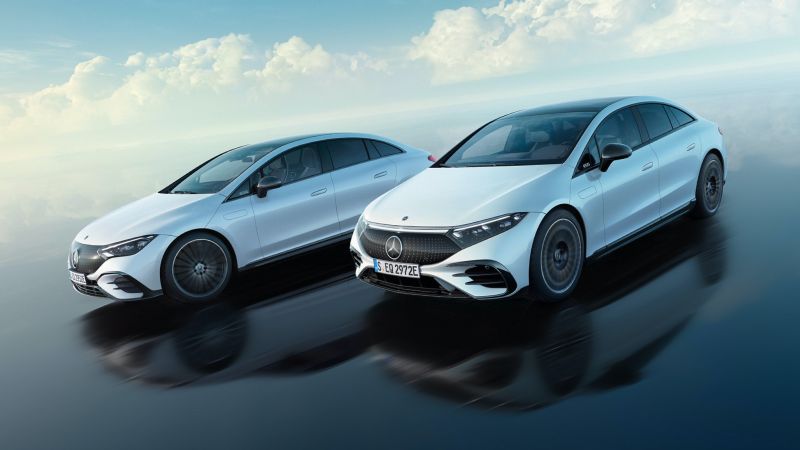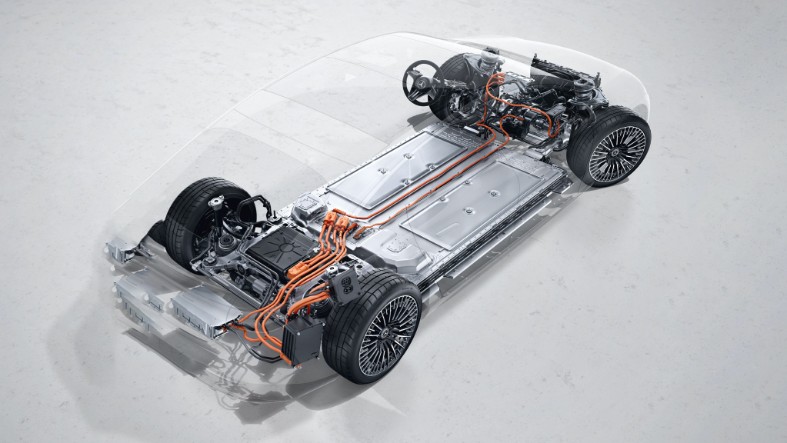Mercedes-Benz is Offering a Performance Upgrade as a Yearly Subscription on its EQ Electric Vehicles
【Summary】For the new EQ family of Mercedes-Benz electric vehicles, the automaker announced it’s offering a performance upgrade as a yearly rental plan rather than a monthly subscription. It is one of the first plans of its kind in the auto industry. For $1,200 a year, customers can opt to increase the torque and maximum output of their Mercedes-EQ vehicles, including faster 0-60 mph acceleration times.

The software-defined vehicle of the future will provide additional revenue streams to automakers as drivers will be able to purchase software upgrades that increase performance of their vehicles, or the ability to add other convenience options, such as an automated parking which can be unlocked via an over-the-air software update.
For the new EQ family of Mercedes-Benz electric vehicles, the automaker announced it's offering a performance upgrade as a yearly rental plan rather than a monthly subscription. It is one of the first plans of its kind in the auto industry.
For $1,200 a year, customers can increase the torque and maximum output of their Mercedes-EQ vehicle with an optional software update. Among the features that can be unlocked is faster 0-60 mph acceleration times, adjustment of the electric powertrain's torque and maximum output.
Mercedes-Benz says that EQ drivers opting for the performance rental will notice the bump in torque and acceleration with an increase in 0-60 mph acceleration times of 0.9 seconds.
The performance upgrade fine tunes the electric motors to increase the maximum motor output (kW) of Mercedes-EQ vehicles by 20 to 24%, depending on the original powertrain setup from the factory. Its made available to the driver in all DYNAMIC SELECT drive settings.
The Mercedes-Benz DyNAMIC SELECT modes allow a driver to configure their vehicle's power and suspension settings with the push of a button. It's available on newer Mercedes models. Options include Comfort, Eco, Sport, Sport+ and Individual mode that can be customized by the driver. High performance AMG models include a Race mode for the track.
For the Mercedes EQE 350 4MATIC SUV, the available performance option will boost the electric motors output from 215 kW to 260 kW and improve acceleration time to 60 mph from approximately 6.0 seconds to 5.1 seconds.
For the Mercedes-EQ EQS 450 4MATIC sedan, power output jumps from 265 kW to 330 kW and 0 to 60 mph acceleration times improve from 5.3 seconds to about 4.5 seconds.

Mercedes EQ customers can upgrade the performance of their electric vehicles via an OTA software update for $1,200 a year.
With software-defined vehicles, new features can be added as they are developed to keep vehicles always up to date. The rollout of software based vehicles was pioneered by Tesla, but now its being offered by other automakers, including, General Motors, Ford Motor Co, Rivian, Lucid Groups and Volvo.
Mercedes Benz announced in July 2020 that it's developing an entirely new software-based architecture that supports over-the-air updates for its next generation vehicle fleet using NVIDIA's AI-powered DRIVE platform.
The advanced software-based vehicle architecture will be introduced beginning with 2024 model year vehicles, eventually rolling out to the entire Mercedes Benz fleet globally, the automaker said.
Drivers of these future Mercedes Benz software-defined vehicles will be able to add convenience apps to their vehicles the same way Apple iPhone and Android device owners can add new apps to their devices.
Mercedes-Benz's software-defined architecture will be built on NVIDIA's robust DRIVE platform, which will come standard in the next-generation of the automaker's vehicles.
Eventually, every future Mercedes Benz model globally will come with the advanced and upgradable software-based architecture, from the entry-level A-Class to S-Class models.
-


Ford is Testing a New Robotic Charging Station to Assist Drivers of EVs With Disabilities
-


Ford Raises the Prices of the F-150 Lightning Electric Pickup Due to Rising Raw Material Costs
-


The BMW 7-Series to Feature HD Live Maps From HERE Technologies for Hands-Free Highway Driving in North America at Speeds up to 80 MPH
-


AutoX to Use the 'Eyeonic Vision Sensor' from California-based SiLC Technologies for its Robotaxi Fleet in China
-


LG Develops ‘Invisible’ Speaker Sound Technology That Could Revolutionize In-Vehicle Audio
-


Researchers at South Korea’s Chung-Ang University Develop a ‘Meta-Reinforcement’ Machine Learning Algorithm for Traffic Lights to Improve Vehicle Throughput
-


Zeekr’s New 009 Electric Passenger Van is the World’s First EV to Feature CATL’s Advanced ‘Qilin’ Battery With a Range of 510 Miles
-


Redwood Materials is Building an Electric Vehicle Battery Recycling Facility in South Carolina
- Volvo is Building a New EV Service and Training Facility at its U.S. Headquarters in New Jersey To Fast Track its Electrification Plans
- EV Charging Provider Electrify America Raises $450 Million, Siemens to Become a Minority Shareholder
- Volkswagen’s Software Unit CARIAD Selects Innoviz as its Direct Lidar Supplier for the Automaker's Future Software-Defined Vehicles
- Tesla Sells 100,291 China-Built Vehicles in November, a Record High
- $12,500 Federal EV Tax Credit Proposal Reportedly Dropped
- Electric Automaker XPeng and Bosch Join the ‘ELISA Project’ to Promote the Use of Linux in Safety-Critical Automotive Applications
- Ford Announces the Largest Utility Agreement in the U.S. History to Assemble All of its Vehicles in Michigan Using 100% Renewable Energy by 2025
- Volvo’s Brand Polestar Confirms That the Polestar 6 Electric Roadster Will Enter Production and Launch in 2026
- BorgWarner Invests $500 Million in Wolfspeed Inc, a Developer of Semiconductors and Silicon Carbide Devices for Electric Vehicles
- Struggling Electric Vehicle Startup Faraday Future Signs Deal to Raise up to $350 Million in Financing to Help it Stay Afloat











 About Us
About Us Contact Us
Contact Us Careers
Careers